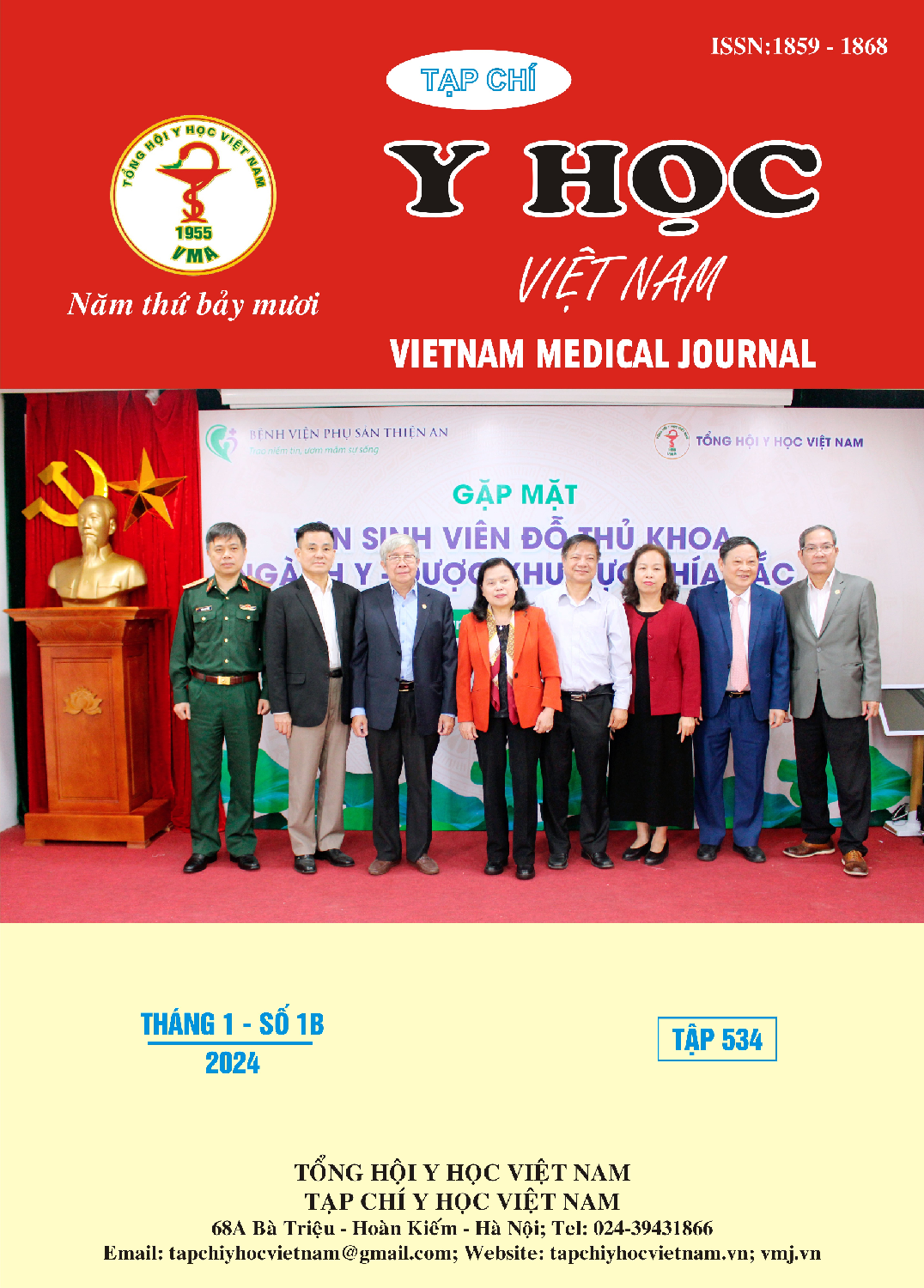ASSESSMENT OF TREATMENT OUTCOMES FOR CLOSED FRACTURES OF THE LOWER HEAD OF THE RADIUS USING SURGICAL TRACTION AND CASTING AT VIET DUC FRIENDSHIP HOSPITAL
Main Article Content
Abstract
Object: Assess the outcomes of non-surgical management of distal radius fractures using traction and casting at the Orthopaedic and Outpatient Clinic - Viet Duc Hospital during the period of 2021-2022. Subject and method: A comprehensive analysis was conducted on a cohort of more than 200 patients who were diagnosed with lower radius fractures and underwent rotational treatment involving traction and casting at the Orthopaedic and Outpatient Clinic at Viet Duc Hospital between 2021 and 2022. Results: 74% of cases were due to traffic accidents, 65.5% were in the right hand, mainly type A fractures (78.5%). Patients were examined within an average of 8.75 ± 5.5 hours, 13.5% encountered complications during treatment, including allergies and compression due to the casting material. During treatment, 13.5% experienced complications, including allergies to the powder material and compression caused by the powder. Outcomes were evaluated based on the Lidstrom scale, 59.0% of the cases showed very good results, 27.0% showed good results, and 4.0% showed moderate results. 4 weeks after the removal of the cast, the percentage of individuals with an RUSS score of less than 2 is 25.0%, those with a score of 2-4 points is 57.5%, and those with a score beyond 4 points is 22.5%. Over the course of 24 weeks, the RUSS scores of all individuals showed consistent improvement, with 100% of them achieving scores ranging from 7 to 8 points. The Green and O'Brien modified by Cooney showed significant improvement, reaching a commendable level of 95.9±19.1 points, 12 months after the removal of the cast. The mean length of immobilisation was 5.4 ± 0.7 weeks. A significant proportion of patients, specifically 69.5%, achieved favourable outcomes in terms of regaining mobility in the wrist joint. Conclusion: Treatment outcomes for closed fractures of the lower head of the radius using surgical traction and casting at the Orthopaedic and Outpatient Clinic - Viet Duc Hospital in 2021-2022 are quite positive.
Article Details
References
2. Viberg B., Tofte S., Rønnegaard A.B. và cộng sự. (2023). Changes in the incidence and treatment of distal radius fractures in adults - a 22-year nationwide register study of 276,145 fractures. Injury, 54(7), 110802.
3. AO Trauma. AO/OTA Fracture and Dislocation Classification 2018, p.9-10.
4. Green D.P. và O’Brien E.T. (1978). Open reduction of carpal dislocations: indications and operative techniques. J Hand Surg Am, 3(3), 250–265.
5. Vishal Prakash, Neelu Singh, Vinay Prabhat (2023). Outcome of treatment of intra-articular distal end radius fractures by volar locking plate versus bridging external fixator augmented by single K-wire through radial styloid. Original Research Articles, 9 (3),1-10.
6. Nguyễn Thị Thắm, Nguyễn Bảo Lục, và Võ Thành Toàn. (2021). Kết quả điều trị gãy kín đầu dưới xương quay bằng nắn bó bột tại Bệnh viện Thống Nhất. Tạp chí Y học Việt Nam, tập 498, tháng 1 số 2, năm 2021.
7. Rundgren J., Bojan A., Mellstrand Navarro C. và cộng sự. (2020). Epidemiology, classification, treatment and mortality of distal radius fractures in adults: an observational study of 23,394 fractures from the national Swedish fracture register. BMC Musculoskelet Disord, 21, 88.
8. Nguyễn Thế Điệp và Phan Thanh Nam (2023). Đánh giá kết quả điều trị gãy đầu dưới xương quay bằng găm đinh Kirschner trên màn tăng sáng tại Bệnh viện Đại học Y Thái Bình. VMJ, 529(2).
9. Bruyere A., Vernet P., Botero S.S. và cộng sự. (2018). Conservative treatment of distal fractures after the age of 65: a review of literature. Eur J Orthop Surg Traumatol, 28(8), 1469–1475.
10. Lee S.K., Kim K.J., Cha Y.H. và cộng sự. (2016). Conservative Treatment Is Sufficient for Acute Distal Radioulnar Joint InstabilityWith Distal Radius Fracture. Ann Plast Surg, 77(3), 297–304.


